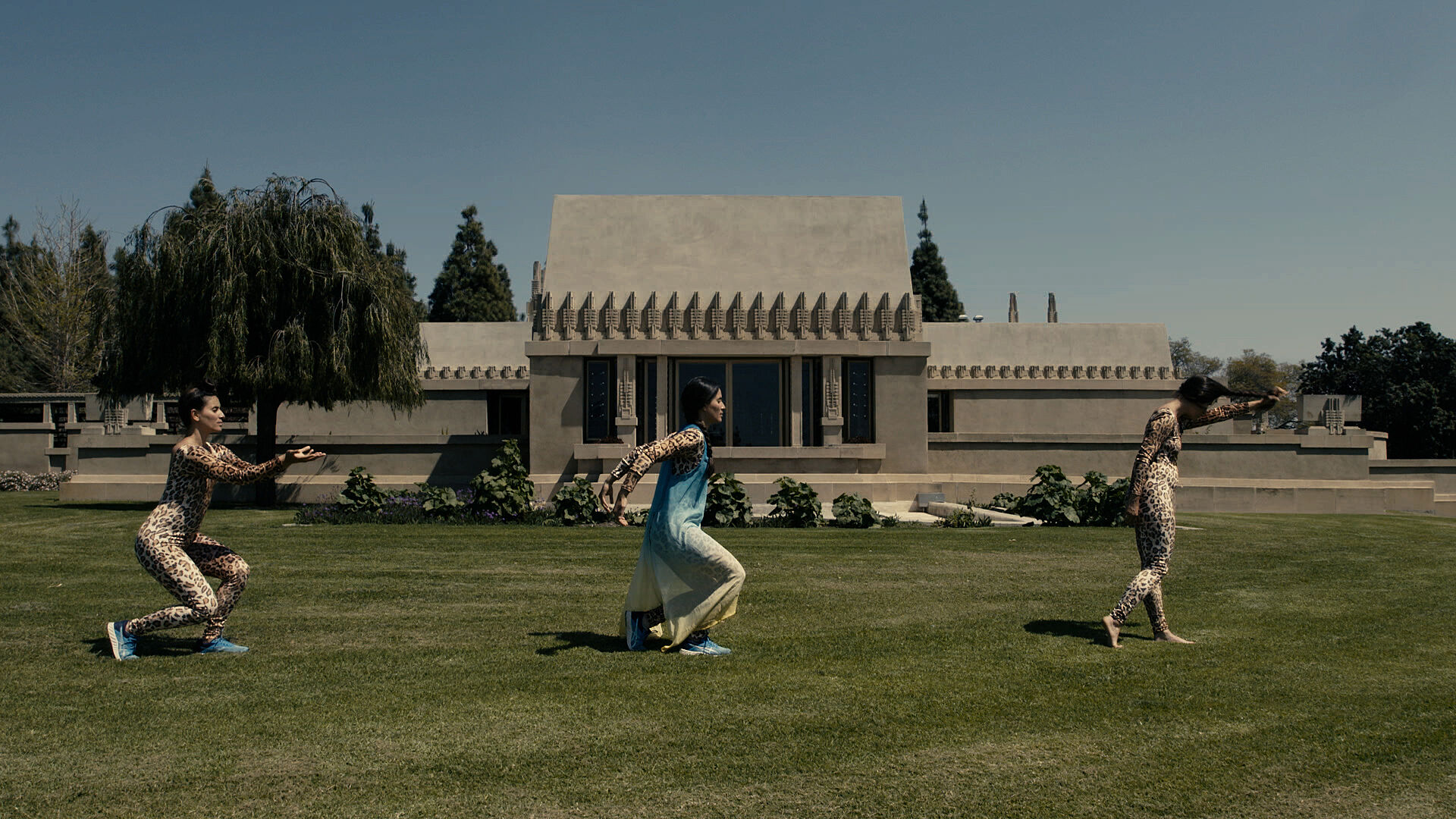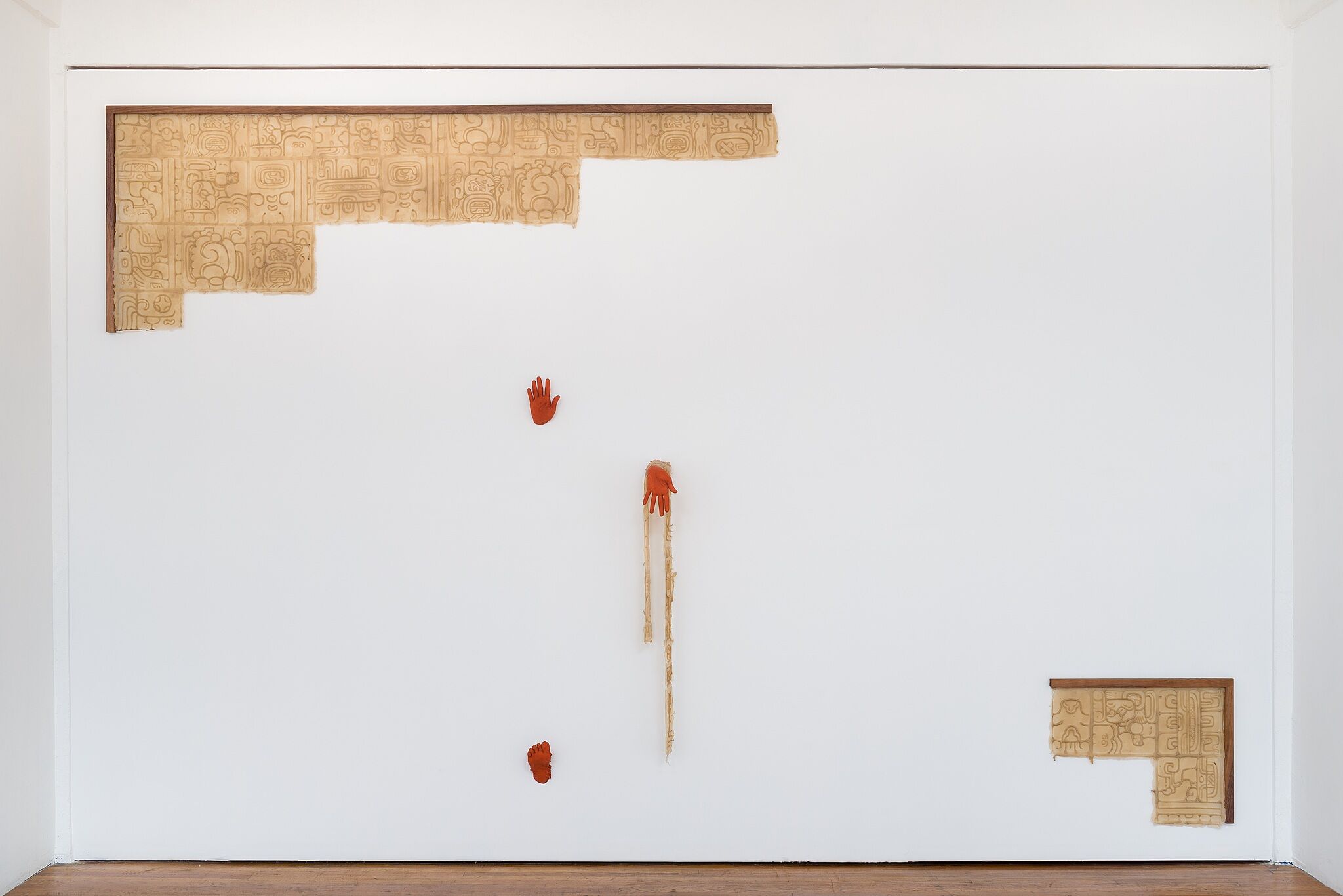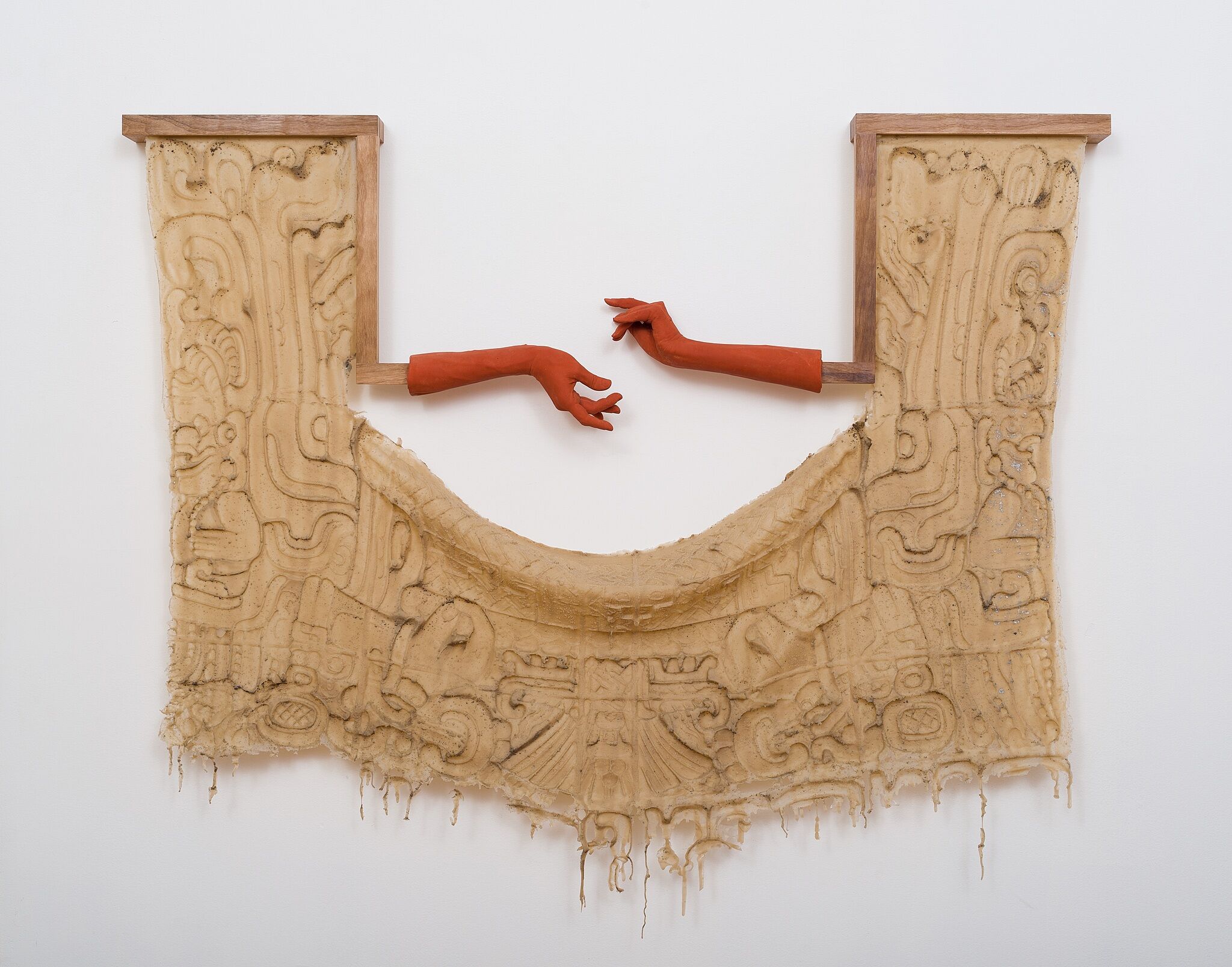Pacha, Llaqta, Wasichay: Indigenous Space, Modern Architecture, New Art | Art & Artists
July 13–Sept 30, 2018
Pacha, Llaqta, Wasichay: Indigenous Space, Modern Architecture, New Art | Art & Artists
Clarissa Tossin
7
Clarissa Tossin’s “archaeology of the present” explores the relationship between Indigenous civilizations and modern Los Angeles through the lenses of gender and appropriation, among other concepts.
In her video Ch’u Mayaa, Clarissa Tossin responds to Frank Lloyd Wright’s Hollyhock House (built 1919–21) in Los Angeles, a prime example of the Mayan Revival style. The choreography takes inspiration from the house’s architecture, as well as from gestures and poses on ancient Maya ceramics and buildings. The soundtrack includes a heartbeat, breathing, and pre-Columbian clay flute. By using Hollyhock House as a stage, Tossin echoes how Maya society would have used a temple or ceremonial structure. Tossin’s title is Yucatec Mayan for “Maya Blue,” the resilient bright blue pigment found in pottery and murals depicting dancers.
Clarissa Tossin based her sculptures Yaxchilán Lintel 25 (feathered serpent) on the Mayan Theater in Los Angeles, which includes exterior and interior ornamental work by Mexican painter and sculptor Francisco Cornejo. Some of his decorations loosely interpret Maya glyphs and figures while others adapt iconography from archaeological sites in Guatemala and Mexico. Tossin here asks us to see the 1927 building as a cultural site with particular meanings for both the city of Los Angeles and its large Mayan population. Her materials celebrate animals central to Maya cosmology but also suggest Hollywood productions: the quetzal feather and serpent skin are explicitly fake. Looking to pre-Columbian temples as sites of performance, Tossin seeks to “make the theater dance”; she cast parts of the facade in flesh-colored silicone and combined them with sculpted hands and feet derived from Maya ceramics.



